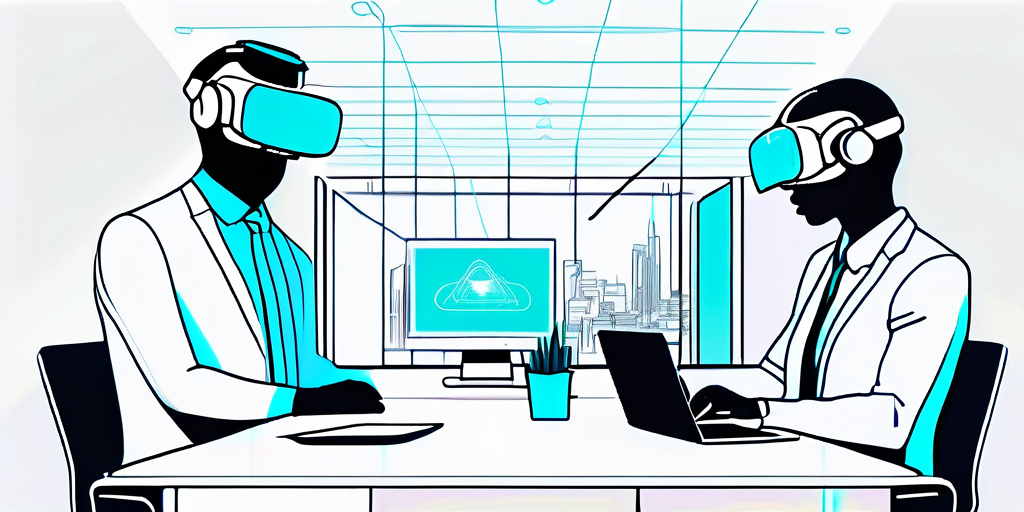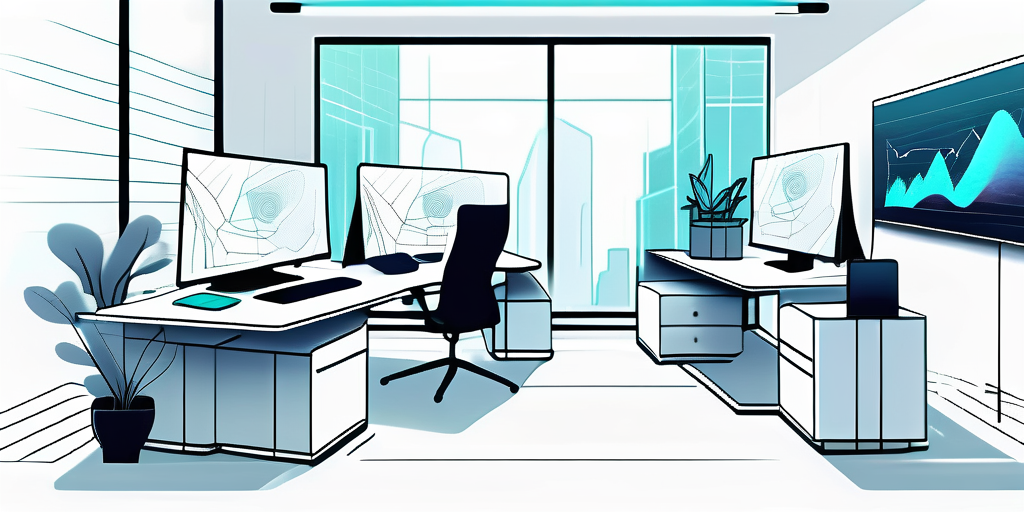In recent years, remote work has become increasingly popular as technology continues to advance. The COVID-19 pandemic has also accelerated the adoption of remote work, pushing companies to find innovative ways to stay connected with their teams. Remote Work 2.0 is now on the horizon, bringing with it a wave of emerging technologies that promise to create more interactive virtual offices. In this article, we will explore some of these technologies and the impact they are set to have on the future of remote work.
Remote Work 2.0: Navigating the Future of Virtual Offices
As the world embraces remote work, businesses are discovering the importance of creating engaging virtual offices. Remote Work 2.0 is all about finding new ways to foster collaboration and maintain human connection, even when teams are dispersed across different locations.

One technology that is gaining traction in this space is holographic communication. By projecting lifelike, 3D images of participants into virtual meetings, holography offers a more immersive experience than traditional video conferencing. This technology has the potential to revolutionize remote work by making it feel like you are truly in the same room as your colleagues, even when you are miles apart.
Another innovative tool that is reshaping the landscape of virtual offices is augmented reality (AR). AR technology superimposes computer-generated images onto the real world, providing a unique way for remote teams to interact and collaborate. Imagine being able to overlay virtual sticky notes on your physical workspace during a brainstorming session, or having virtual avatars guide you through a virtual office tour. AR has the power to enhance productivity and creativity in remote work environments.
Furthermore, the rise of virtual reality (VR) is also influencing the future of remote work. VR technology creates fully immersive digital environments that allow users to interact with each other in a simulated space. From virtual team-building exercises to virtual conferences in exotic locations, VR opens up a world of possibilities for remote teams to connect and engage in ways that were previously unimaginable. With VR, the boundaries of traditional office spaces are transcended, enabling teams to collaborate in innovative and exciting ways.
The Role of Holographic Communication in Remote Work
Imagine attending a virtual meeting where you can see your coworkers as holograms, interacting with them in a way that feels remarkably natural. Holographic communication has the power to bridge the physical distances between team members and foster a greater sense of presence and connection.
Furthermore, holography opens up a whole new realm of possibilities for remote presentations and trainings. Instead of relying on static slides and videos, presenters can bring their content to life using holograms, creating a more captivating and engaging experience for remote participants.
Moreover, the use of holographic communication in remote work can significantly enhance collaboration among team members. By visualizing 3D holographic models of projects, team members can gain a deeper understanding of complex concepts and provide more insightful feedback, leading to improved decision-making processes.
Additionally, the immersive nature of holographic communication can help remote workers combat feelings of isolation and disconnection. Seeing their colleagues as lifelike holograms can create a sense of shared presence, making virtual meetings feel more personal and engaging.
Virtual Reality: Transforming Remote Work Environments
Virtual reality (VR) is another technology that holds tremendous potential for remote work. By immersing users in a virtual environment, VR can transport them to a shared workspace, regardless of their physical location. This means that remote teams can collaborate as if they were in the same office, fostering a sense of togetherness and boosting productivity.
Moreover, VR can provide remote workers with a better sense of presence and belonging. By simulating a physical office environment, complete with virtual coworkers and interactive elements, VR reduces the feelings of isolation often associated with remote work. Employees can feel more connected to their colleagues and the company culture, leading to increased job satisfaction and engagement.
One of the key advantages of using VR in remote work environments is the ability to customize the virtual workspace to suit the specific needs of the team. From virtual whiteboards for brainstorming sessions to immersive 3D models for product design reviews, VR offers a wide range of tools that can enhance collaboration and creativity among remote workers.
Furthermore, VR can also be used to recreate the experience of attending conferences, seminars, or training sessions in a virtual setting. This not only saves time and resources associated with travel but also allows remote employees to participate in events that they may not have been able to attend otherwise, expanding their professional development opportunities.
Artificial Intelligence in Virtual Offices: Improving Efficiency
Artificial intelligence (AI) is revolutionizing the landscape of virtual offices by introducing innovative solutions that enhance productivity and streamline operations. The integration of AI-powered tools in remote work settings is reshaping the way tasks are managed and executed, ultimately leading to increased efficiency and effectiveness.
One significant application of AI in virtual offices is the utilization of machine learning algorithms to analyze vast amounts of data. By processing and interpreting complex datasets, AI can generate valuable insights that empower remote workers to make informed decisions and optimize their workflows. This data-driven approach not only enhances the overall efficiency of remote teams but also enables them to adapt swiftly to changing circumstances.
Moreover, AI chatbots are playing a crucial role in enhancing communication and support within virtual offices. These intelligent virtual assistants are capable of handling routine inquiries, providing real-time assistance to remote employees, and automating repetitive tasks. By leveraging AI chatbots, remote workers can access information promptly, receive timely support, and streamline their daily operations with ease.
Furthermore, AI’s ability to personalize work experiences for remote employees is a game-changer in virtual office environments. By analyzing individual preferences, work patterns, and performance metrics, AI algorithms can tailor recommendations and suggestions to suit the unique needs of each remote worker. This personalized approach not only boosts employee satisfaction and engagement but also fosters a more productive and harmonious virtual work environment.
Augmented Reality Tools for Enhanced Collaboration
Augmented reality (AR) is a technology that overlays virtual elements onto the real world. In the context of remote work, AR can be used to enhance collaboration by enabling remote teams to interact with virtual objects and information in their physical environment.

For example, AR can be utilized for remote training, allowing employees to learn new skills by following interactive step-by-step instructions overlaid onto their workspace. Imagine a scenario where a team of engineers is spread across different locations, but they need to learn how to assemble a complex piece of machinery. With AR, each engineer can wear a pair of smart glasses that projects virtual arrows, labels, and animations onto their real-world view. This not only provides them with clear instructions but also allows them to see the machine from different angles, making the learning process more comprehensive and engaging.
AR can also facilitate remote troubleshooting by providing real-time guidance and annotations on physical equipment, reducing the need for on-site visits. Imagine a scenario where a field technician encounters a complex issue with a piece of machinery. Instead of waiting for a specialist to arrive on-site, the technician can wear AR glasses that connect them to an expert remotely. The expert can then see what the technician sees through the glasses and provide real-time guidance, overlaying arrows, diagrams, and instructions onto the technician’s view. This not only saves time and resources but also enhances the technician’s ability to solve the problem efficiently.
Furthermore, AR can enhance virtual meetings by overlaying additional information, such as visual data or 3D models, onto the discussion. Imagine a scenario where a team of architects is collaborating on a building design remotely. With AR, each architect can wear AR glasses that project a 3D model of the building onto their real-world view. As they discuss and make changes to the design, the 3D model updates in real-time for all team members, allowing them to visualize and understand the proposed changes more effectively.
As technology continues to evolve, so does our ability to create more interactive and engaging virtual offices. Remote Work 2.0 is on the horizon, and with emerging technologies like holographic communication, virtual reality, artificial intelligence, and augmented reality, we can expect a future where remote work becomes even more immersive and connected. These technologies have the potential to transform the way we collaborate and redefine the notions of distance and presence in the workplace.
By embracing these technologies and finding innovative ways to leverage them, businesses can unlock the full potential of remote work, enabling teams to thrive and succeed in a digital, increasingly interconnected world. Imagine a future where remote teams can collaborate seamlessly, using holographic communication to have virtual meetings where they feel as if they are in the same room. With the help of AI, these virtual meetings can be even more productive, with intelligent virtual assistants taking notes, summarizing discussions, and providing real-time translations for global teams. The possibilities are endless, and the future of remote work holds immense potential for enhanced collaboration and productivity.

